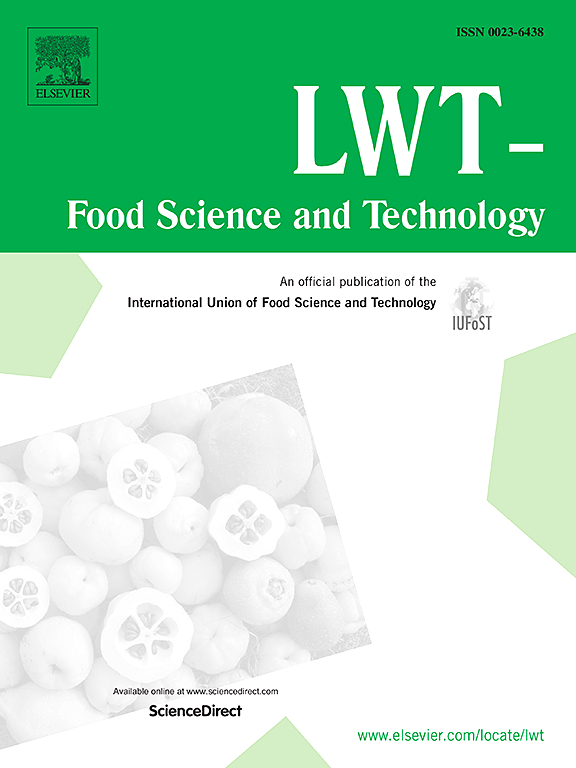Reduction of polycyclic aromatic hydrocarbons in pork burgers using high-pressure processed white grape pomace
IF 6
1区 农林科学
Q1 FOOD SCIENCE & TECHNOLOGY
引用次数: 0
Abstract
This study evaluates the impact of incorporating high hydrostatic pressure-treated white grape pomace (WGP) into pork burgers on the formation of polycyclic aromatic hydrocarbons (PAHs) during barbecue cooking. Five formulations were tested: a control, a commercial sample with sulphites, and three with increasing levels of WGP (0.5%, 1%, 3%). The burgers were cooked over charcoal briquettes, and changes in lipid oxidation, volatile compound profiles, and PAH content were analyzed. Results demonstrated that WGP significantly reduced PAH levels, particularly phenanthrene and fluorene, compared to the control, without altering the proximate composition, color, or lipid oxidation. The proportion of C18:3 fatty acids also increased with higher WGP levels, with 3% pomace showing the highest values. In total, 74 volatile compounds were identified, including aldehydes, ketones, acids, and alcohols, mainly derived from fatty acid oxidation. Commercial burgers had the highest levels of aldehydes like hexanal and nonanal, and alcohols such as 2-isopropyl-5-methyl-1-hexanol. Terpenes like α-pinene and D-limonene, from added spices, were also more abundant in commercial burgers. No significant differences were found in these compounds between control and pomace-added samples. Overall, WGP reduces PAH formation while preserving the burgers' physicochemical properties, offering a promising approach to enhancing the safety and quality of grilled meat.
求助全文
约1分钟内获得全文
求助全文
来源期刊

LWT - Food Science and Technology
工程技术-食品科技
CiteScore
11.80
自引率
6.70%
发文量
1724
审稿时长
65 days
期刊介绍:
LWT - Food Science and Technology is an international journal that publishes innovative papers in the fields of food chemistry, biochemistry, microbiology, technology and nutrition. The work described should be innovative either in the approach or in the methods used. The significance of the results either for the science community or for the food industry must also be specified. Contributions written in English are welcomed in the form of review articles, short reviews, research papers, and research notes. Papers featuring animal trials and cell cultures are outside the scope of the journal and will not be considered for publication.
 求助内容:
求助内容: 应助结果提醒方式:
应助结果提醒方式:


